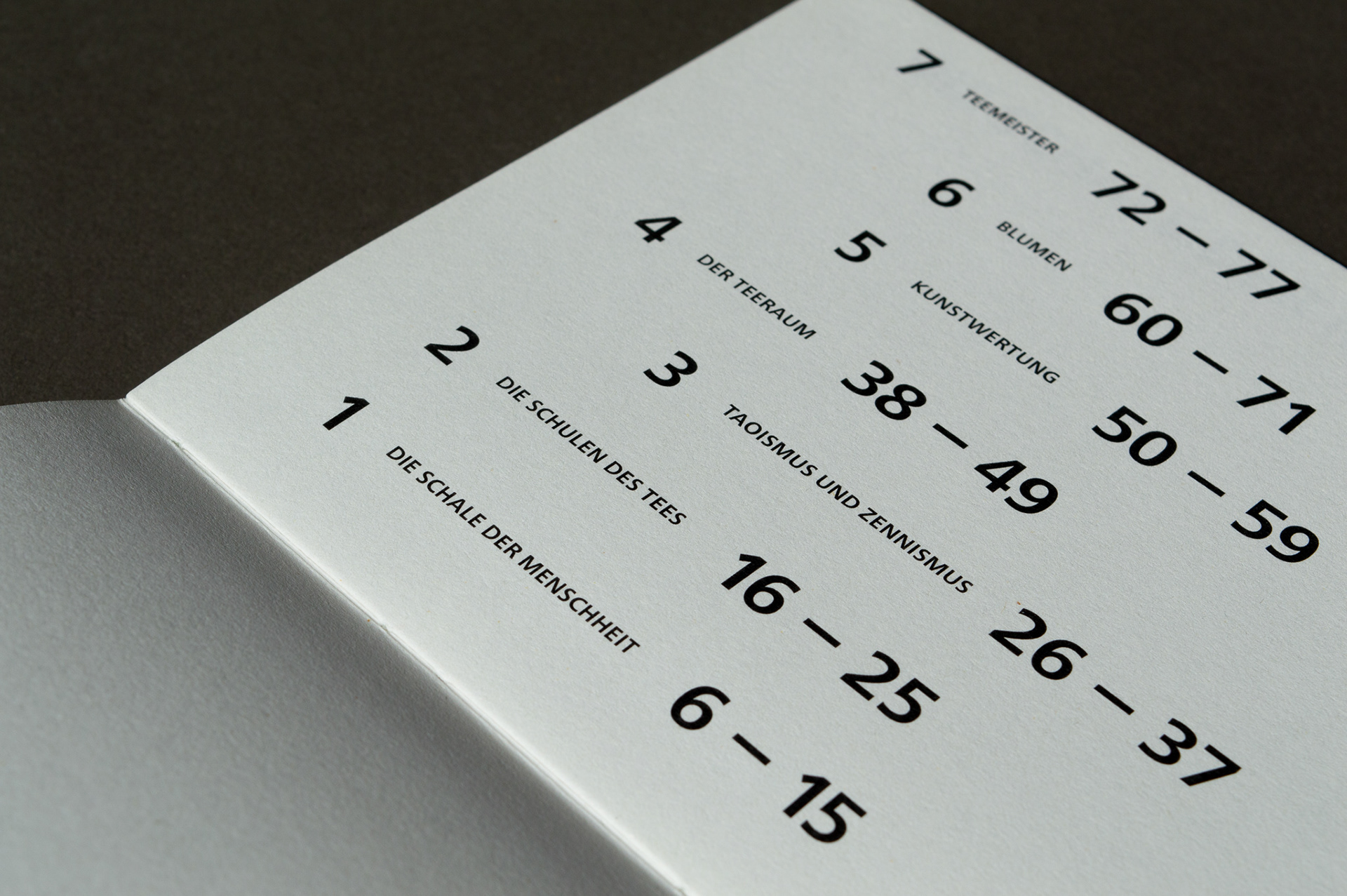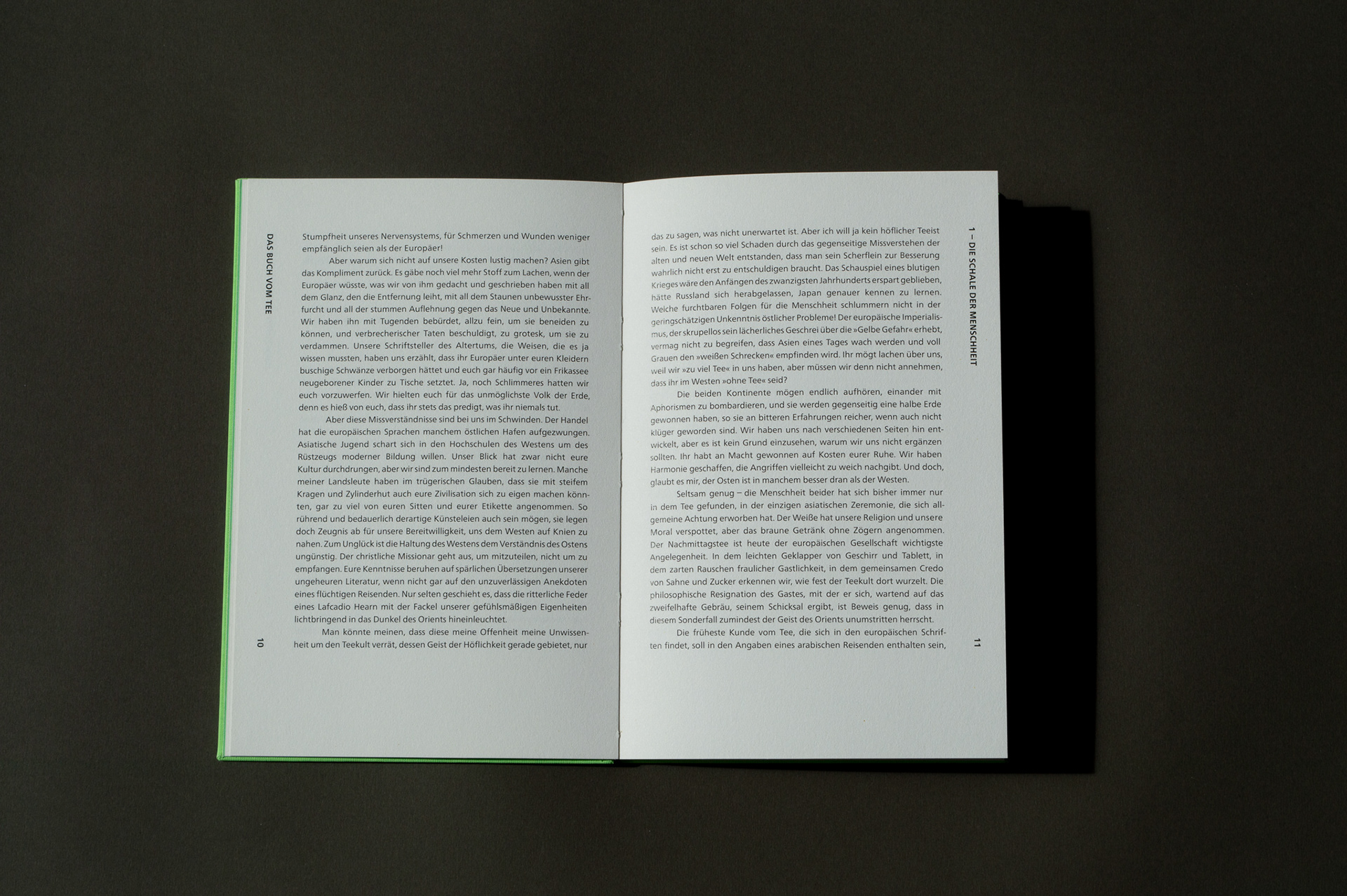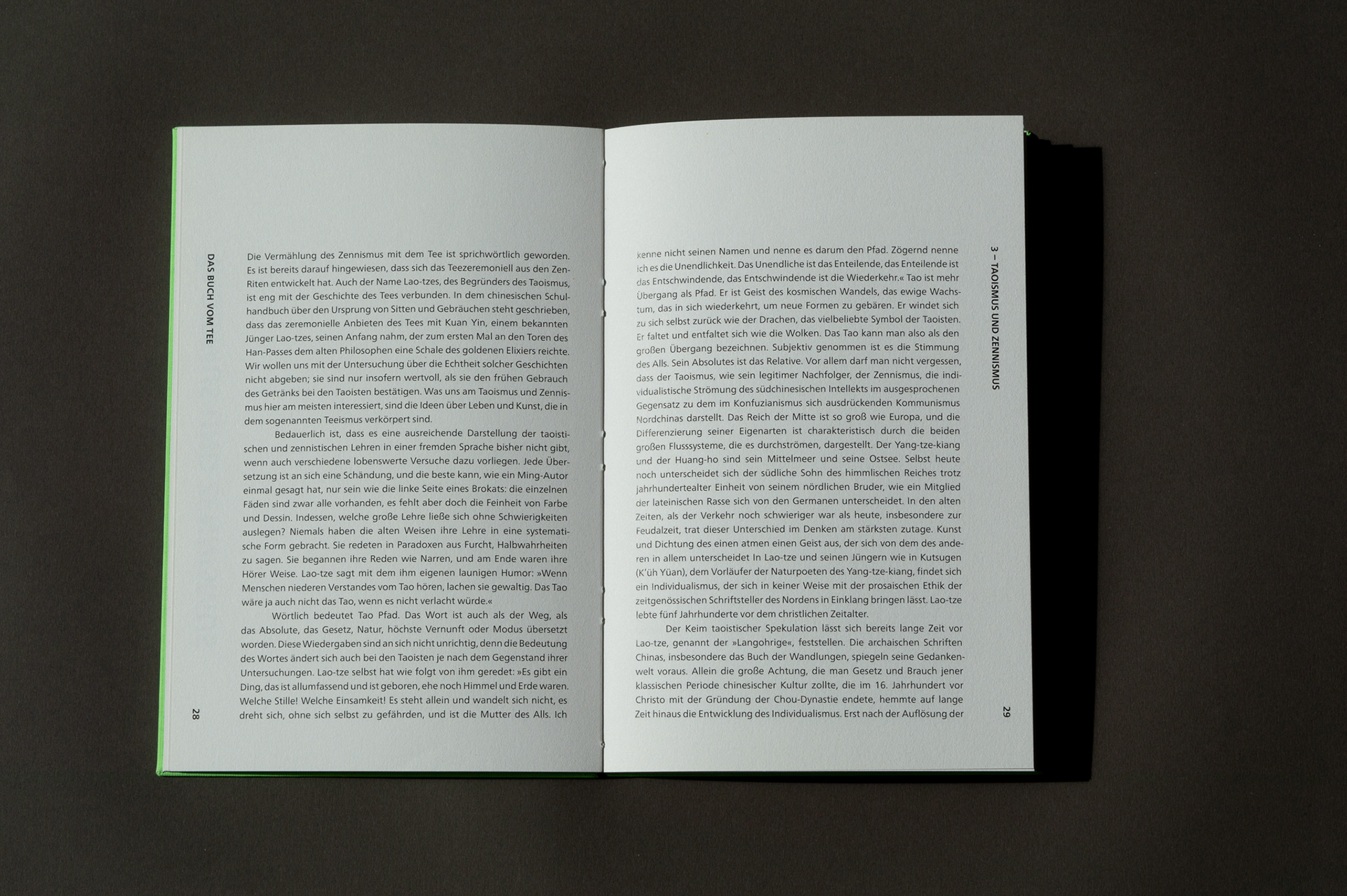Das Buch vom Tee wurde 1906 von dem Gelehrten Okakura Kakuro für die westliche Welt verfasst. Obwohl das Buch mehr als ein Jahrzehnt alt ist, hat es nichts an Aktualität verloren. Der Inhalt handelt nicht hauptsächlich vom Tee selbst, sondern auch um die japanische Philosophie dahinter. Um die asiatische Kultur kennenzulernen, muss man verstehen, welchen Stellenwert der Tee einnimmt.
In sieben Kapiteln wird die Geschichte des Tees und seine Rolle auf die japanische Kultur thematisiert. Der Tee dient als roter Faden, der sich durch das Buch zieht und die übliche Tee Thematik wie die Herkunft des Tees, die Zubereitungen, die Bedeutung des Teehauses oder die Rolle des Teemeisters aufführt, aber auch den Zen Buddhismus, Taoistische Gleichnisse und Unterschiede zwischen Mensch und Tier anspricht.
Ein minimalistisches Redesign, das insbesondere die japanischen Ästhetik-Prinzipien wie wabi sabi, yabo, shibusa und yohaku-no-bi aufgreift.




